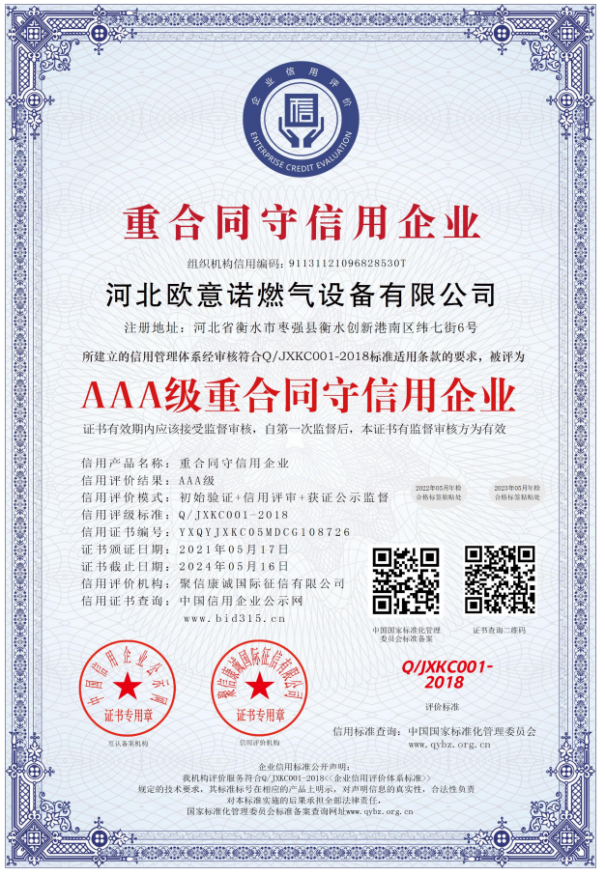
Nov . 24, 2024 16:57
Back to list
صمام تخفيض ضغط الغاز
Gas Pressure Reducing Valves An Essential Component in Gas Distribution Systems
Gas pressure reducing valves (PRVs) play a crucial role in the safe and efficient distribution of various gases, including natural gas, propane, and biogas. These valves are responsible for reducing the high pressure from gas supply sources to a lower, manageable level suitable for residential, commercial, and industrial applications. Understanding the function, types, and importance of PRVs can help ensure their effective use in gas systems.
Function of Gas Pressure Reducing Valves
The primary function of a gas pressure reducing valve is to maintain a constant outlet pressure, regardless of fluctuations in the input pressure from the gas supply. For instance, natural gas is typically supplied at high pressures that can exceed 1000 psi. Such high-pressure gas is not suitable for direct use in appliances or heating systems, which typically operate at pressures of around 7 to 14 inches of water column (WC), equating to approximately 0.25 to 0.5 psi.
PRVs achieve this pressure reduction by utilizing a pressure-sensing mechanism that detects the output pressure and adjusts the valve accordingly. If the output pressure rises above the predetermined set point, the valve closes partially to restrict the flow of gas, and if it falls below the set point, the valve opens to allow more gas to pass through. This self-regulating feature is what makes PRVs essential for ensuring a consistent pressure level, thereby preventing any potential hazards associated with over-pressurization.
Types of Gas Pressure Reducing Valves
.
1. Single-Stage PRVs These valves are designed for applications where the inlet pressure remains relatively constant, and they provide a simple solution for reducing pressure in low-demand scenarios.
صمام تخفيض ضغط الغاز

2. Two-Stage PRVs In situations where the inlet pressure can vary significantly, two-stage PRVs are used. They utilize two valves in series to achieve a more stable outlet pressure. The first valve reduces the pressure significantly, while the second valve fine-tunes the output to the desired level.
3. Lock-Up PRVs These valves are equipped with a locking mechanism that prevents any unexpected increase in outlet pressure, making them ideal for applications requiring high safety standards.
4. Adjustable PRVs Some valves allow operators to adjust the outlet pressure manually to meet the specific requirements of various applications, providing flexibility in pressure management.
Importance of Gas Pressure Reducing Valves
The significance of PRVs in gas distribution systems cannot be understated. First and foremost, they contribute to safety by protecting appliances and systems from the risks of excessive pressure, which can lead to malfunctions, leaks, or even explosions. Additionally, by maintaining a consistent pressure, PRVs help improve the efficiency of gas utilization in heating, cooking, and industrial processes, leading to energy savings and cost reductions.
Moreover, regular maintenance and testing of PRVs are essential to ensure their proper functioning. Over time, wear and tear can affect a valve's performance, so routine checks are necessary to avoid potential leaks or failures that could result in significant safety risks.
In conclusion, gas pressure reducing valves are integral components of gas distribution systems that ensure safe and efficient operation. Their ability to regulate pressure effectively protects both consumers and infrastructure, making them indispensable in modern energy management. Understanding their function and types can enhance safety and performance across various applications, highlighting the importance of employing the right PRV for any gas-related system.
Latest news
-
Safety Valve Spring-Loaded Design Overpressure ProtectionNewsJul.25,2025
-
Precision Voltage Regulator AC5 Accuracy Grade PerformanceNewsJul.25,2025
-
Natural Gas Pressure Regulating Skid Industrial Pipeline ApplicationsNewsJul.25,2025
-
Natural Gas Filter Stainless Steel Mesh Element DesignNewsJul.25,2025
-
Gas Pressure Regulator Valve Direct-Acting Spring-Loaded DesignNewsJul.25,2025
-
Decompression Equipment Multi-Stage Heat Exchange System DesignNewsJul.25,2025

